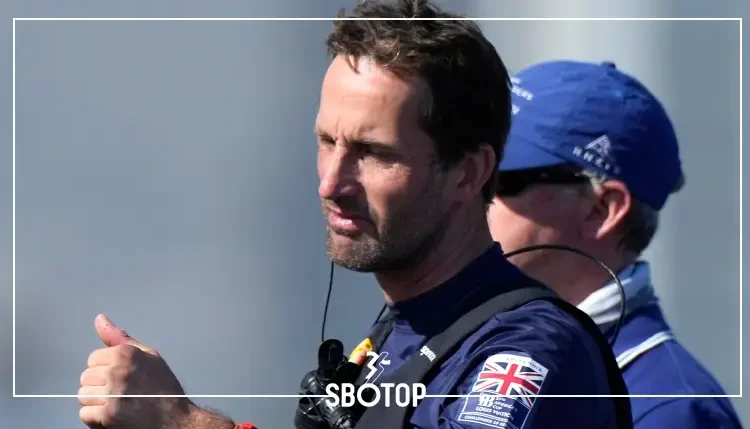The America’s Cup, the oldest international sporting trophy, has once again slipped through the fingers of Great Britain. After an intense series of races, Great Britain’s INEOS Team UK fell short against the reigning champions, Emirates Team New Zealand, in a 7-2 defeat. This loss extends Britain’s 173-year quest for their first-ever victory in the prestigious sailing competition. The result not only marks another painful chapter in the nation’s America’s Cup history but also reinforces the dominance of Team New Zealand in the sport.
The Significance of the America’s Cup for Britain
Since the inception of the America’s Cup in 1851, the British have been chasing this elusive trophy. The very first race, known as the “100 Guinea Cup,” was contested off the Isle of Wight, and it was here that the American schooner America defeated the British fleet, giving the competition its name. That loss set the stage for what would become a long-standing pursuit of redemption for British sailors.
Over the years, several British challengers have taken part in the America’s Cup, including notable figures such as Sir Thomas Lipton, who challenged five times between 1899 and 1930 but was unsuccessful each time. The competition, deeply ingrained in the British maritime tradition, has always held a special place for the country. Winning it would signify the pinnacle of achievement in the world of sailing—a moment of national pride for a country with such a rich naval history.
For INEOS Team UK, backed by British billionaire Sir Jim Ratcliffe, this latest campaign represented one of the best-funded and most technologically advanced efforts Britain has ever mounted. With renowned sailor Sir Ben Ainslie at the helm—himself a four-time Olympic gold medallist—the team had high hopes of finally breaking the curse. Yet, the dream was dashed once again.
Emirates Team New Zealand’s Unyielding Dominance
Emirates Team New Zealand has built a reputation as one of the most formidable competitors in the history of the America’s Cup. With multiple victories under their belt, including their latest triumph, they have become the standard-bearers for innovation and performance in the sport. Their success can be attributed not only to their exceptional sailing skills but also to their cutting-edge technological advancements, which have consistently given them an edge over their competitors.
In the 2021 edition of the America’s Cup, held in Auckland, Team New Zealand displayed their dominance once again, combining speed, precision, and tactical brilliance. Their yachts, designed using state-of-the-art technology, proved to be faster and more efficient than those of their rivals. This year, Emirates Team New Zealand continued their dominance, comfortably securing a 7-2 victory over Great Britain in the finals.
The team’s skipper, Peter Burling, and helmsman, Blair Tuke, have been at the forefront of New Zealand’s success in recent years. Their calm demeanor, sharp decision-making, and superior knowledge of the waters have consistently placed them ahead of their rivals. This duo, supported by a highly skilled crew and technical team, once again demonstrated their supremacy, outmaneuvering the British in race after race.
Where Did Great Britain Fall Short?
Despite coming into the competition with high hopes, INEOS Team UK faced significant challenges from the start. While they had moments of brilliance, it became clear that Emirates Team New Zealand’s superior boat design and race strategy were difficult to match. One of the key areas where Great Britain struggled was in their boat speed. In many races, they were simply unable to keep up with the speed and agility of the New Zealand yacht.
Another factor that contributed to Britain’s defeat was tactical errors. In several races, INEOS Team UK made critical mistakes in positioning and race execution, which allowed the New Zealand team to capitalize and extend their lead. Despite having a world-class skipper in Sir Ben Ainslie, the team’s inability to maintain consistent pressure on their opponents ultimately proved to be their undoing.
Moreover, the weather conditions and course layouts seemed to favor Emirates Team New Zealand, who were more adept at reading the wind shifts and making quick adjustments. In sailing, the ability to make split-second decisions based on changing conditions can often determine the outcome of a race, and this was an area where New Zealand consistently outperformed their British counterparts.
The Road Ahead for Great Britain
With this defeat, the question now turns to the future of Great Britain’s America’s Cup ambitions. While the loss is undoubtedly a significant setback, it is unlikely to deter the British from continuing their quest for the trophy. INEOS Team UK has made significant investments in both technology and talent, and Sir Ben Ainslie has been vocal about his determination to bring the Cup home.
The America’s Cup is as much about technological innovation as it is about sailing prowess. In recent years, the competition has become a battleground for cutting-edge maritime engineering, with teams pushing the limits of yacht design and performance. The challenge for INEOS Team UK will be to continue innovating and finding ways to close the gap with teams like Emirates Team New Zealand.
One area where the British may focus their efforts is in yacht design. While their boat performed well, it was clear that the New Zealand design had an edge in speed and handling, particularly in light wind conditions. Collaborating with top engineers and designers will be crucial if Britain hopes to field a more competitive yacht in future editions of the Cup.
Additionally, the team may look to refine their race strategy and execution. While Sir Ben Ainslie remains one of the most decorated sailors in the world, even the best can make mistakes under pressure. Fine-tuning the team’s approach to race tactics, especially in the unpredictable conditions of the America’s Cup, will be vital to their chances of success.
The Legacy of the America’s Cup for Great Britain
Despite the disappointment of another missed opportunity, the legacy of the America’s Cup for Great Britain remains strong. The competition has inspired generations of British sailors, engineers, and enthusiasts, and it continues to be a source of national pride. Each challenge, whether successful or not, contributes to the rich history of British maritime sports and fuels the desire to keep pushing for that elusive victory.
Great Britain’s involvement in the America’s Cup is more than just about winning a trophy; it is about innovation, resilience, and a deep-rooted connection to the sea. The nation’s sailors have shown time and again that they are willing to rise to the challenge, and while victory has remained out of reach for over a century, the pursuit itself is a testament to the enduring spirit of British sailing.
The America’s Cup, often referred to as the “Formula 1 of sailing,” will continue to evolve, and with it, Great Britain’s determination to win. Whether it takes another five years or another 50, the dream of lifting the Auld Mug remains alive. As INEOS Team UK regroups and prepares for future campaigns, they will do so with the knowledge that they are part of one of the greatest sporting traditions in the world.
For now, the America’s Cup will remain in New Zealand, but Great Britain’s quest is far from over. The journey continues, and with each challenge comes the hope that one day, the Cup will return to the waters where it all began.
Also Read:
- SBOTOP Sir Chris Hoy: Six-Time Olympic Gold Medallist Discloses Terminal Cancer Diagnosis with ‘Two to Four Years’ to Live’
- SBOTOP Breaking Down Bruno Fernandes’ Struggles at Man Utd: Positioning Pressing and Creativity Under Scrutiny
- SBOTOP Key Talking Points from the United States GP: Lewis Hamilton’s Performance Liam Lawson’s Rise and Max Verstappen’s FIA Swearing Controversy








